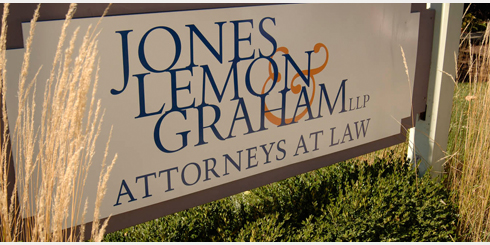“Forgivable” loans under Payroll Protection Program/CARES Act
By Christopher J. Graham and Joseph P. Kelly
We previously posted here about the new SBA-guaranteed “forgivable” loans available under the Payroll Protection Program portion of the recently-passed CARES Act (the “Act”) and how those loans may be attractive.
This post provides more details.
Limitations on amount:
The new SBA-guaranteed “forgivable” loans for the “covered period” of 2/15/20 – 6/30/20 are limited to 2.5 times average total monthly payments for total payroll costs incurred during the 1-year period before the loan origination date (with a $10 million maximum). There’s also deferral of payments for 6 months; no collateral required; no guarantees; no prepayment penalties; and a 1% interest rate.
Forgiveness:
Subject to documentation requirements, a company (or sole proprietorship) won’t have to repay the loan to the extent loan proceeds are used for costs paid or incurred—during the 8-week period starting with loan origination—for “payroll costs,” interest on “covered mortgage obligations” and payments on any “covered rent obligation” or “covered utility obligation” – as those terms are defined in the Act.
If a covered loan has a balance after “forgiveness” under the Act, the SBA will continue its guarantee and “the covered loan shall have a maximum maturity of 10 years from the date on which the borrower applies for loan forgiveness….(Sec. 1102(a)(2)(K)).
Applications; timing of availability
Secretary Munchin reportedly said that the loan program will be up and running by April 3; we shall see. The Act says that the SBA has up to 15 days from enactment (on March 27) to “issue regulations….” (Sec. 1114). So, that would be by Saturday, April 11.
According to the Treasury Department, if using an existing SBA lender, small businesses and sole proprietorships can apply for loans starting on April 3 and independent contractors and self-employed individuals can apply starting April 10. A list of SBA lenders can be found on www.sba.gov. Other lenders will be available to make these loans once they are approved and enrolled in the loan program.
Here’s a link to the application which includes certification requirements described below.
Certification – need and use:
The Act contains a certification requirement on need and use that will factor into any borrower’s decision:. Here’s what it says:
An eligible recipient applying for a covered loan shall make a good faith certification—
(I) that the uncertainty of current economic conditions makes necessary the loan request to support the ongoing operation of the eligible recipient; (II) acknowledging that the funds will be used to retain workers and maintain payroll or make mortgage payments, lease payments, and utility payments; (III) that the eligible recipient does not have an application pending for a loan under this subsection [(Section 7(a) of the Small Business Act)] for the same purpose and duplicative of amounts applied for or received under a covered loan; (IV) during the period beginning on February 15, 2020 and ending on December 31, 2020, that the eligible recipient has not received amounts under this subsection for the same purpose and duplicative of amounts applied for or received under a covered loan. (Sec. 1102(a)(2)(G))
We think the certification wording has gray areas. If a company is one of the “lucky” ones that has an uptick in business and doesn’t really need the money, it can’t meet the certification requirements—we presume.
But if a company’s business is down and given the “uncertainty of current economic conditions,” it may have a “good faith” belief that it will need the funds in the next month to “support” “ongoing operations,” we presume it could provide the required certification.
If instead of the SBA loan, company owners could cover the expected need by injecting capital or loaning funds to the company, we presume that wouldn’t mean that company is ineligible for the loan and could provide the certification. In that regard, another section of the Act provides that, “During the covered period [2/15/20 – 6/30/20], the requirement that a small business concern is unable to obtain credit elsewhere … shall not apply to a covered loan.” (Sec. 1102(a)(2)(I)). So, if a company is not required to try to obtain “credit elsewhere,” why would owners be required to provide additional capital or loan the company the funds themselves?
Part (II), meanwhile, refers to using the funds “to retain workers and maintain payroll or make mortgage payments, lease payments, and utility payments.” But that’s a bit different than an earlier part of the Act, regarding use, which provides, subject to a list of exceptions, that:
During the covered period [2/15/20 – 6/30/20], an eligible recipient may, in addition to the allowable uses of such a loan made under this subsection, use the proceeds of the covered loan [meaning a loan made under this new law during the covered period] for—
(I) payroll costs [a defined term]; (II) costs related to the continuation group health care benefits during periods of paid sick, medical, or family leave, and insurance premiums; (III) employee salaries, commissions, or similar compensations; (IV) payments of interest on any mortgage obligation (which shall not include any prepayment of or payment of principal on a mortgage obligation); (V) rent (including rent under a lease agreement); (VI) utilities; and (VII) interest on any other debt obligations that were incurred before the covered period.” (Sec. 1102(a)(2)(F)).
We expect that there will be SBA regulations shedding some light on the certification requirements. Accuracy in providing certifications will be very important – as we are sure there will be consequences if a certification is false.
Affiliation rules for large corporate groups:
In determining eligibility, a company that is part of a larger corporate group will be subject to SBA “affiliation” rules. For determining whether a potential borrower exceeds the maximum number of employees, the SBA’s affiliation rules (13 C.F.R. 121.103) provide that the employees of the borrower and its affiliates will be aggregated. A company with foreign ownership may be subject to additional limitations – but we have not seen anything specific on that issue yet and have reached out to lenders for more information.
Loan recipients not entitled to tax benefits under the Act:
The Act also includes changes to the Internal Revenue Code, including a new refundable payroll tax credit for employee “retention” and for deferral of payment of 2020 payroll taxes into 2021 and 2022. But neither tax benefit will be available to a company that takes on an SBA “forgivable” loan.
Category: Business Law Blog, Employment Law Tracker Comment »

